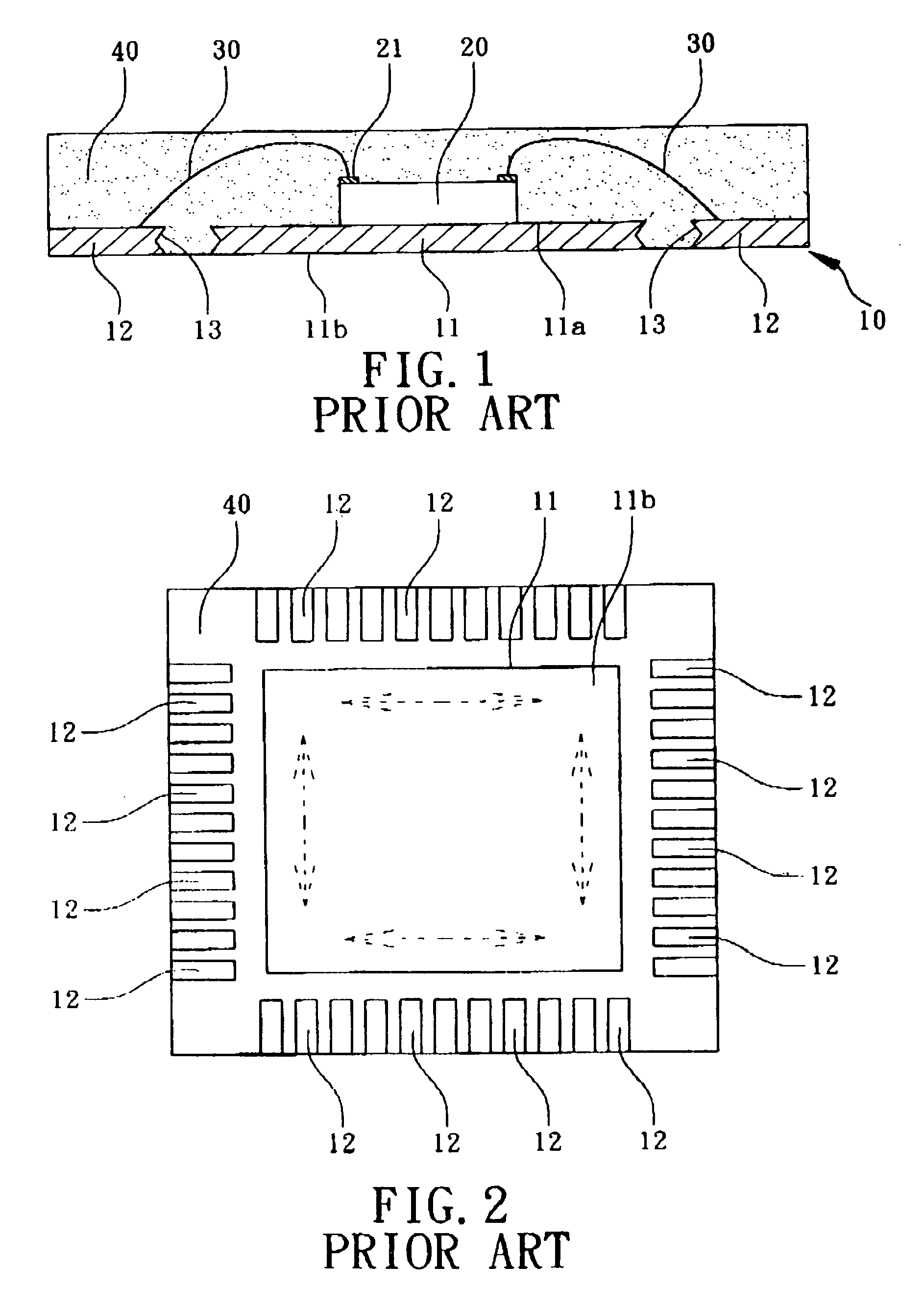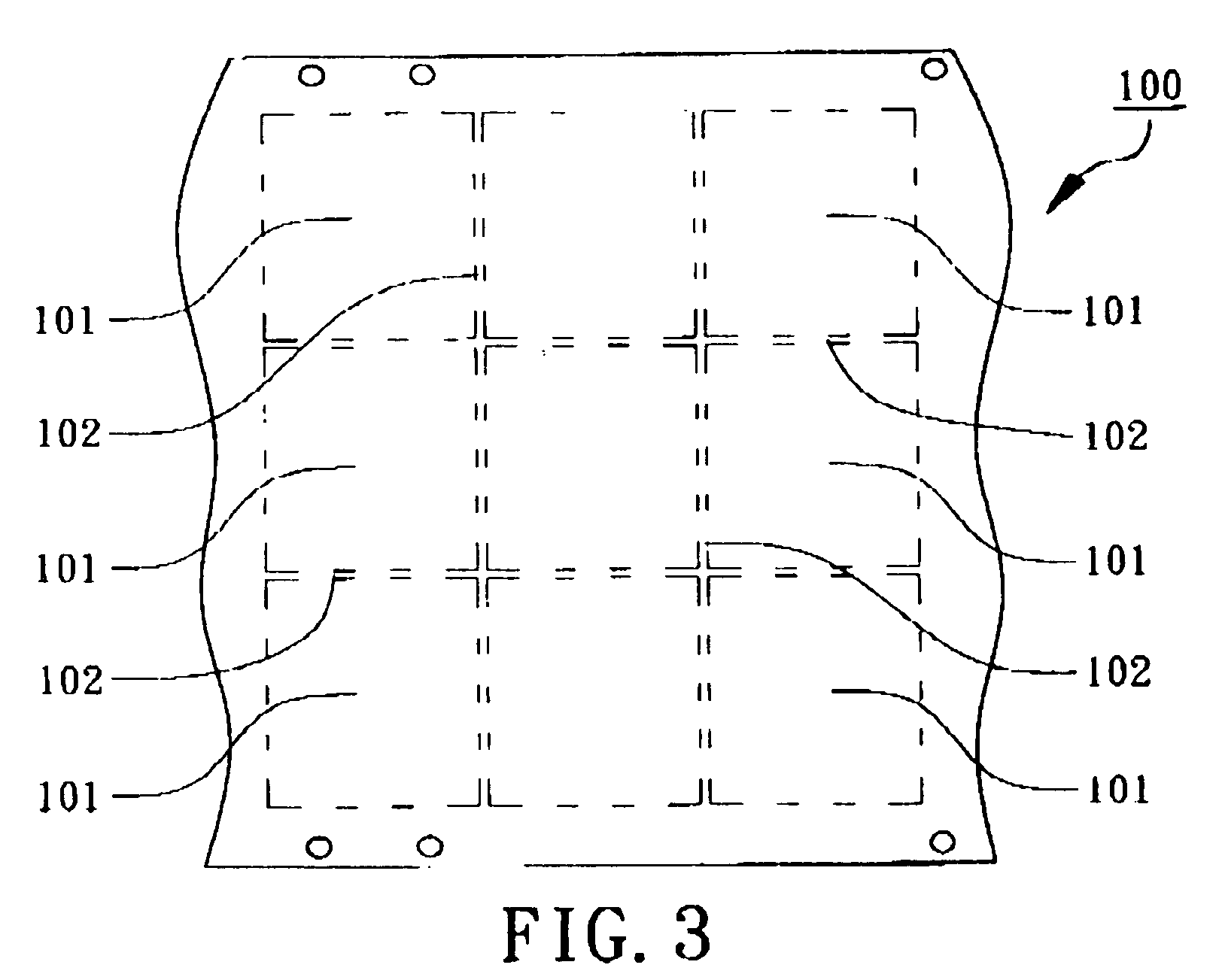Method for fabricating leadless packages with mold locking characteristics
a technology of mold locking and leadless semiconductors, applied in semiconductor devices, semiconductor/solid-state device details, electrical devices, etc., can solve the problems of inability to enhance the horizontal mold locking of the die pad b>11, against the package body, etc., to achieve easy delaminate, avoid defeat, and easy filling of the package body
- Summary
- Abstract
- Description
- Claims
- Application Information
AI Technical Summary
Benefits of technology
Problems solved by technology
Method used
Image
Examples
Embodiment Construction
[0021] Please refer to the drawings attached, the present invention will be described by means of an embodiment below.
[0022] According to the first embodiment of the present invention, a leadless leadframe 100 with an improved die pad for mold locking is shown in FIGS. 3, 4, 5, and 6. As shown in FIG. 3, the leadframe 100 has a plurality of units 11 in a matrix and a plurality of connecting bars 102 between the units 101. As shown in FIG. 4, the leadframe 100 in each unit 101 comprises a die pad 110 and a plurality of leads 120, which are connected together via the connecting bars 102. As shown in FIG. 6, the die pad 110 has an upper surface 111, a lower surface 112 and at least a sidewall 113. The sidewall 113 is located between the upper surface 111 and the lower surface 112. The sidewall 113 can be vertical or oblique. The height of the sidewall 113 can be equal to or smaller than the thickness of the die pad 110. As shown in FIG. 7, the upper surface 111 of the die pad 110 is c...
PUM
 Login to View More
Login to View More Abstract
Description
Claims
Application Information
 Login to View More
Login to View More - R&D
- Intellectual Property
- Life Sciences
- Materials
- Tech Scout
- Unparalleled Data Quality
- Higher Quality Content
- 60% Fewer Hallucinations
Browse by: Latest US Patents, China's latest patents, Technical Efficacy Thesaurus, Application Domain, Technology Topic, Popular Technical Reports.
© 2025 PatSnap. All rights reserved.Legal|Privacy policy|Modern Slavery Act Transparency Statement|Sitemap|About US| Contact US: help@patsnap.com



